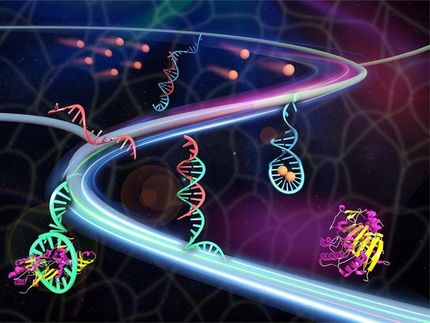Targeting drugs with hydrogels
Researchers in Japan have developed a technique which allows them to control and target drug delivery to specific sites of the body at specific times, thus reducing side effects and improving treatment dramatically. The results were published in Science and Technology of Advanced Materials.
Better control over the delivery of drugs to specific sites in the body at specific times would reduce unwanted side effects and improve medical treatment dramatically. ‘Smart’ polymers are promising materials for controlling drug delivery, since they change their properties in response to specific stimuli. However, they usually require continuous stimulation to maintain these changes. Now, researchers led by Takao Aoyagi at the MANA, National Institute for Materials Science, Japan, have developed an approach that could allow more subtle control and timing of drug delivery.
The new technique uses hydrogels, which are a type of ‘smart’ polymer made of water-soluble long-chain molecules. The team first showed that they could control the acidity inside a hydrogel by loading it with a compound called o-NBA. This releases protons, which increases acidity, when irradiated with UV light. When o-NBA-loaded hydrogel was irradiated, acidity increased inside; if only part of the gel was irradiated, acidity throughout increased gradually as protons diffused.
Aoyagi and his colleagues then loaded hydrogel with o-NBA and L-DOPA, a precursor of the brain chemical dopamine that is used in the treatment of Parkinson’s disease. The change of acidity in the gel upon UV irradiation caused L-DOPA to be released because the acidity disrupted the interaction of L-DOPA with the molecules in the gel.
Irradiation with UV not only enhanced overall L-DOPA release from the hydrogel, but also caused an extra ‘explosive’ release five hours after irradiation. This allowed the drug release to be timed, as well as triggered, in a controlled way.
Being able to control the release of drugs from hydrogels by triggering a change in acidity could help to design programmable drug delivery techniques that offer improved targeting of treatment.
Original publication
Most read news
Original publication
Prapatsorn Techawanitchai, Naokazu Idota, Koichiro Uto, Mitsuhiro Ebarab and Takao Aoyagi; "A smart hydrogel-based time bomb triggers drug release mediated by pH-jump reaction."; Science and Technology of Advanced Materials Vol. 13 (2012) p. 064202.
Organizations
Other news from the department science

Get the life science industry in your inbox
By submitting this form you agree that LUMITOS AG will send you the newsletter(s) selected above by email. Your data will not be passed on to third parties. Your data will be stored and processed in accordance with our data protection regulations. LUMITOS may contact you by email for the purpose of advertising or market and opinion surveys. You can revoke your consent at any time without giving reasons to LUMITOS AG, Ernst-Augustin-Str. 2, 12489 Berlin, Germany or by e-mail at revoke@lumitos.com with effect for the future. In addition, each email contains a link to unsubscribe from the corresponding newsletter.





















































